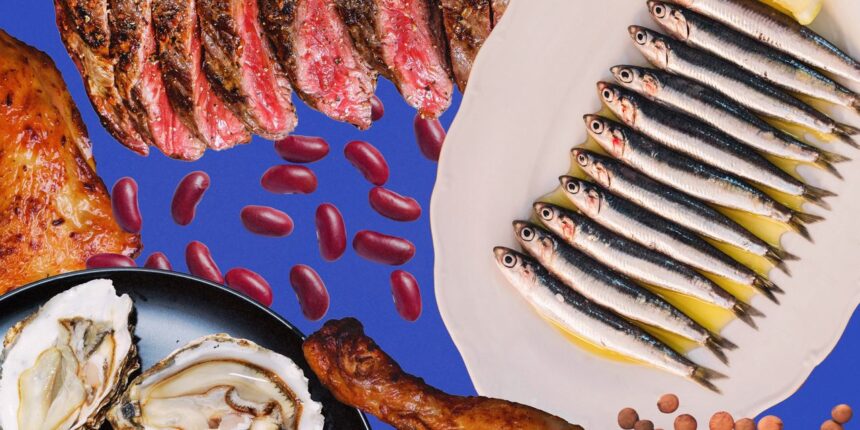For maximum zinc content, you’ll want to choose dark meat over light meat—say, chicken thighs over chicken breasts, according to Tsui. Thanks to the increased myoglobin, she explains, “these cuts of meat [are generally] darker and therefore generally higher in zinc and in iron.”
5. Eggs
While we’re on the subject of poultry, poultry products are pretty zinc-y too. One large egg contains 0.6 milligrams of zinc, 5% of the RDA, according to the NIH. (Other animal products are no slouch either. We already mentioned plain Greek yogurt, but milk and cheese also don’t disappoint. Cheddar cheese comes in at 1.5 milligrams per 1.5 ounces. And 1% milk isn’t far behind, at one milligram per cup.)
Of course, eggs are pretty pricey right now, thanks to an ongoing bird flu outbreak that has killed millions upon millions of laying birds, as SELF previously reported. If you’re trying to use your existing stock sparingly, you can always stretch out your morning omelet or scramble by adding one of these 10 ingredients to the pan for a more filling breakfast. (Some of them will even give an extra bump of zinc too!)
6. Fish
Not only are fish species like anchovy, herring, mackerel, and sardines rich in zinc, they also pack a bunch of protein, iron, vitamin B12, and omega-3 fatty acids. In the case of sardines (canned in oil, with bone), a three-ounce serving offers 1.1 milligrams of zinc, 10% of the RDA, according to the NIH. Meanwhile, the same amount of cooked salmon will deliver about half that: 0.5 milligrams. Besides, tinned fish is super in right now—you can use it in everything from sandwiches to salads to soups to dips.
7. Beef, pork, and other types of meat
By the numbers, beef is a heavy hitter. In fact, it accounts for 20% of the US’s annual zinc intake from food, according to the NIH. Roasted beef (bottom sirloin) contains around four milligrams of zinc per three ounces, 35% of your RDA, while the same amount of broiled pork chops (bone in) contains around two milligrams. Of course, roasting and broiling are only two of the many potential cooking methods available to you. Nguyen’s a big fan of braised pork, as well as ground pork in her Vietnamese vegetable soup.
What’s more, organ meat is especially rich in zinc, according to Tsui. “Liver is probably going to be the most common one, especially in Western cuisines,” she says, but plenty of other types are edible too, including brain, heart, kidneys, intestines, stomach lining (tripe), pancreas, thymus, and tongue. Braised or pan-fried beef liver contains around 4.5 milligrams of zinc per three ounces, according to the USDA.
8. Oysters
Ah, our final entry—and heaviest hitter. When it comes to zinc content, oysters “are in a league of their own,” Nguyen says. According to the NIH, these slurp-worthy shellfish contain more zinc per serving than any other food, though the exact number can vary depending on the location and season. Raw Eastern oysters contain 32 milligrams of zinc per three-ounce serving size—nearly 300% of the RDA. Cooked Pacific oysters offer slightly less zinc, but still a substantial amount—28 milligrams for that amount, or 256% of the RDA. “Oysters tend to vary in size quite a bit,” Tsui says, making it hard to estimate exactly how many oysters equals three ounces. However, she shares a good rule of thumb: “For any sort of meat or seafood, four ounces is about the size of the palm of your hand or a deck of cards.”
Read the full article here



